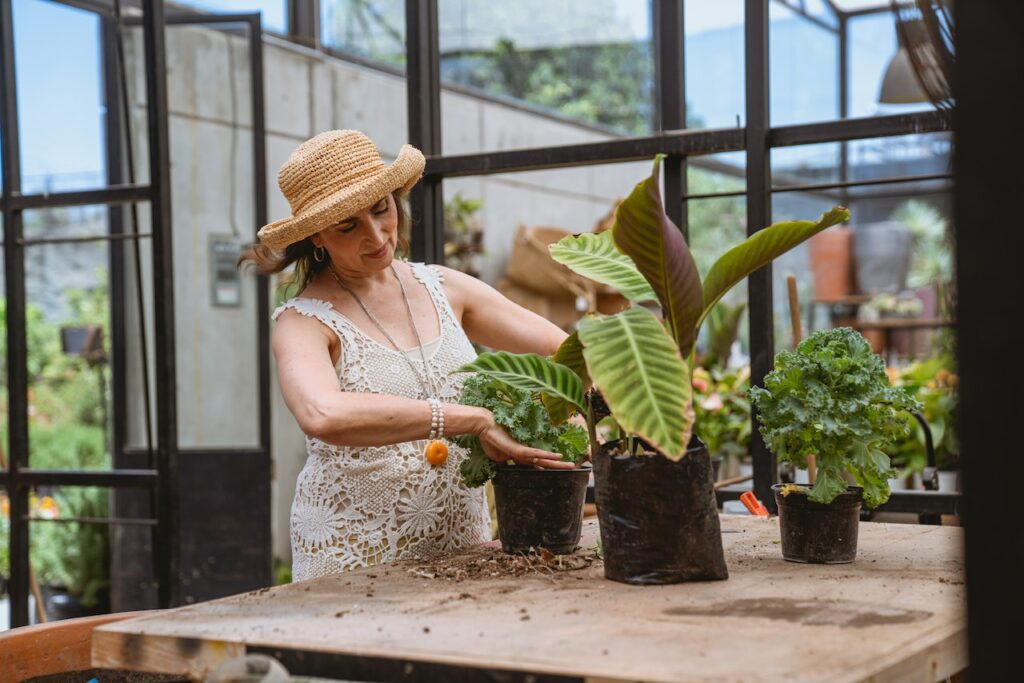Ready for some fun DIY house projects?
Many retirees seek meaningful activities to spend their time. Do It Yourself, or DIY house projects provide a fun way to stay active, improve skills, and enhance houses for crafty people. Retired handymen may tackle several appealing DIY projects, such as renovating the backyard, kitchen, or hideaway.
This post covers six fascinating DIY home projects for retired handymen. These projects let you use your creativity and skill to improve your home’s atmosphere and utility, from curb appeal to personalization. If you’re ready to embark on this new adventure, let’s get started!

DIY Deck Install
Retired handymen may show off their abilities by building a deck. Planning and detail are essential for a successful project. Here are some general tips to get started:
Gather materials and tools before installing. Use a circle saw, miter saw, drill, screwdriver, level, tape measure, and safety gear. Having everything handy will streamline the procedure.
Follow suitable foundation-laying processes for stability and durability. To support the deck, you may require concrete footings. Dig holes deep enough, pour concrete evenly, and fasten post anchors or hardware connections. Foundations need alignment and leveling.
Installing decking planks is thrilling. The method is same for wood or composite decking. Lay the first board perpendicular to the joists, allowing a small space between boards for water drainage. Galvanized screws or concealed fasteners secure the boards. Chalk lines or spacers help maintain spacing.
Finish your DIY deck project with aesthetic and long-lasting accents. To preserve and maintain wooden decking, stain or seal it. Post caps give elegance and protection. Add lights, outdoor furniture, and decorations to make an inviting outdoor setting.
Safety should be your priority during the job. Know local construction rules, use safety gear, and be careful while using power tools or working at heights. If needed, get help from experts or experienced DIYers.
DIY deck installation lets retired handymen express their creativity, demonstrate their talents, and create a lovely outdoor environment for years.
Self-Refacing Cabinets
Refacing kitchen cabinets is an appealing and cost-effective option to update your kitchen without replacing them. As a retired handyman, DIY cabinet refacing lets you show off your abilities and make your kitchen look great. This section will walk you through the DIY cabinet resurfacing procedure for a successful and gratifying job.
Assess your cabinets first. Before continuing, fix loose hinges or damaged surfaces. Refacing requires a firm base.
Select cabinet refacing materials. Consider veneer, laminate, or RTF. Laminate and RTF provide colors and patterns, while veneer looks like wood. Consider durability, upkeep, and style while choosing.
After choosing materials, measure cabinet doors, drawer fronts, and exposed end panels. List all sizes and quantities. Order refacing supplies from a trustworthy provider using these dimensions.
Prepare cabinets for new refacing materials. Remove cabinet doors, drawer fronts, and hardware. Remove any oil, grime, and residue from surfaces. To improve adhesive bonding, lightly sand cabinet surfaces.
Reface the cabinet surfaces now. Apply veneer, laminate, or RTF according to manufacturer recommendations. Use a utility knife, straightedge, and saw to correctly trim materials to suit cabinet surfaces. Apply adhesive to the reverse of the refacing material and gently press it into the cabinet surface, smoothing out bubbles and creases.
Reinstall cabinet doors, drawer fronts, and hardware after refacing. Adjust them to align and work. For a full makeover, choose knobs, handles, or pulls that match the new cabinet faces.
Clean up the workplace and enjoy your new kitchen after DIY cabinet refacing!
Use safe tools and gear during the procedure. Take your time and follow the manufacturer’s directions. Your DIY cabinet refacing project may refresh your kitchen without breaking the budget with proper design and execution.
YOU MAY ALSO LIKE: Try These 8 Activities in Your Newfound Free Time and Thank Us Later
Wood Paneling
Wood paneling quickly adds warmth, charm, and character to any space. As a retired handyman, DIY wood paneling lets you show off your abilities and create a lovely accent wall. This section will walk you through the DIY wood paneling procedure.
Choose a wood paneling style and pattern that matches your taste. The correct style—beadboard, shiplap, or geometric—will define the tone for your project. Look to interior design journals, internet, or architecture for the best wood paneling design.
After choosing a style, pick your paneling wood. Reclaimed wood and tongue-and-groove boards are available. Consider pricing, availability, and durability while choosing. Stain or paint the wood to get the color and finish you want.
Make sure the wall is clean, smooth, and defect-free before installing. To prepare the wall for paneling, fill holes and sand. Professional results need this step.
Measure and mark the wall for wood panel placement. Consider panel sizes and spacing. Start at the bottom of the wall and proceed up, using a level to guarantee straight panels.
Install using glue, nails, or both. Following the manufacturer’s directions, evenly apply adhesive to each panel’s back. To avoid splitting, pre-drill holes and securely fasten panels to the wall with nails. Check the panels for level and alignment as you install them. If required, lightly tap the panels with a rubber mallet. Take your time to install it professionally.
After installing all panels, finish it off. Wood filler and sanding level the surfaces and repair nail holes and gaps between panels. Follow the manufacturer’s directions to apply a stain or paint. To preserve wood, seal it.
Watch how your DIY wood paneling project makes your area more beautiful and welcoming. Take delight in your wood paneling and your workmanship.
To lay wood panels accurately, measure and double-check. If you need help, enjoy the creative process of altering your room with classic DIY wood paneling.
DIY Landscaping
Landscaping and garden design may improve your outside environment. As a retired handyman, DIY landscaping lets you express your creativity and create a relaxing space. This section will walk you through the DIY landscaping and garden design process for a successful and enjoyable job.
Imagine your landscape’s overall appearance and feel. Consider your outdoor space’s design, theme, and function. Determining your objectives can help you build a bright garden, a Zen retreat, or a family-friendly space.
Next, evaluate your outside space. Note soil condition, drainage, sunshine exposure, and any plants or buildings. This review will help you choose landscaping plants and identify any needed changes.
Consider slopes, trees, and water elements while sketching your scene. Use this design to choose plants, hardscape, and layout.
Consider climate, upkeep, and aesthetics while choosing DIY landscaping plants. Use plants of varying heights, textures, and colors to provide diversity and balance. Native plants are well-suited to the local climate and need minimal upkeep.
Remove weeds, pebbles, and rubbish before planting. For soil fertility and drainage, add compost or mulch. Your plants will flourish in this preparation. Hardscaping includes paths, patios, and retaining walls. Choose materials that match your design and the environment. Select hardscape materials based on longevity, pricing, and installation.
Start with walls and paths to implement your landscaping idea. This will structure the design. After installing the hardscape, plant your selected plants according to their spacing and growth patterns. To provide dimension, stack plants of varying heights and textures.
Your DIY manicured garden needs regular maintenance. Create a plant-specific watering and care routine. Take care of pests and illnesses. To preserve form and development, prune plants regularly.
Patience and flexibility are essential for DIY landscaping. As plants age, gardens may need changes. Allow your imagination to flow as you create your outside area into a unique refuge.

Self-Organized Garage
Retired handymen with several tools need an orderly garage. It guarantees work productivity, safety, and accessibility. Several simple strategies may maximize garage storage space.
DIY shelves may maximize vertical space. Customize these shelves to fit various goods and enhance storage. Adjustable shelf enables changing storage demands.
DIY cabinets may also store more extensive tools and equipment. Cabinets hide storage and tidy the workstation. Lockable cabinets are useful for storing dangerous or precious objects.
Hanging tools on the pegboard or slatwall works well. They are accessible and beautiful. Clear storage bins and labeled containers make finding and organizing smaller objects easy.
Creating task-specific parking zones streamlines workflow. Place tools and materials near woodworking, automotive, and gardening sections. Bright overhead or task lighting improves vision and accuracy.
Garage recycling and garbage management are also crucial. To keep a clean, eco-friendly area, use recycling and rubbish containers.
Garage organization requires regular upkeep. Decluttering and reassessing the organizing scheme regularly maintains the room neat and efficient. A well-maintained garage requires removing unnecessary objects and making modifications.
Retired handymen may improve safety, productivity, and hobby satisfaction by stressing the value of an organized garage, applying practical storage strategies, and using DIY shelving, cabinet installation, and other organizing solutions.
Homemade Furniture
DIY custom furniture projects are ideal for retired handymen with much carpentry knowledge. Custom furniture is a fun and innovative way to express your taste. This post will inspire retired handymen to try DIY custom furniture, present project ideas, provide advice on woodworking methods, dimensions, and finishes, and share resources for inspiration and designs.
Retired handymen gain greatly from DIY bespoke furniture projects. It showcases your woodworking talents and attention to detail. Custom furniture lets you design unique items that reflect your style and personality.
Project ideas are limitless. To showcase your carpentry abilities and book collection, build a gorgeous bookcase. Experiment with wood species, joinery, and finishes to create a magnificent coffee table for your living space. Create a unique and elegant headboard to personalize your bedroom. A bespoke dining table may also create a room that suits your demands and aesthetic.
Before starting your DIY custom furniture projects, learn woodworking, dimensions, and finishes. Measure, mark, cut, connect, and sand. Before beginning tasks, get good tools and practice.
Custom furniture requires precise dimensions. Measure the area where the furniture will go and plan the size of each piece. Make comprehensive drawings or designs to help you build items that fit perfectly in their intended areas. Explore joinery methods to find the perfect fit for your project. Consider dowel, pocket hole, or conventional joinery. To build robust furniture, study each method’s pros and downsides.
Custom furniture finishes affect its appearance and durability. To obtain the desired look, use stains, oils, or varnishes. Consider wood durability, care, and natural qualities. Before applying finishes to final products, practice on test pieces.














